Bat Detector in Parabola
Reading Time: 4 minutes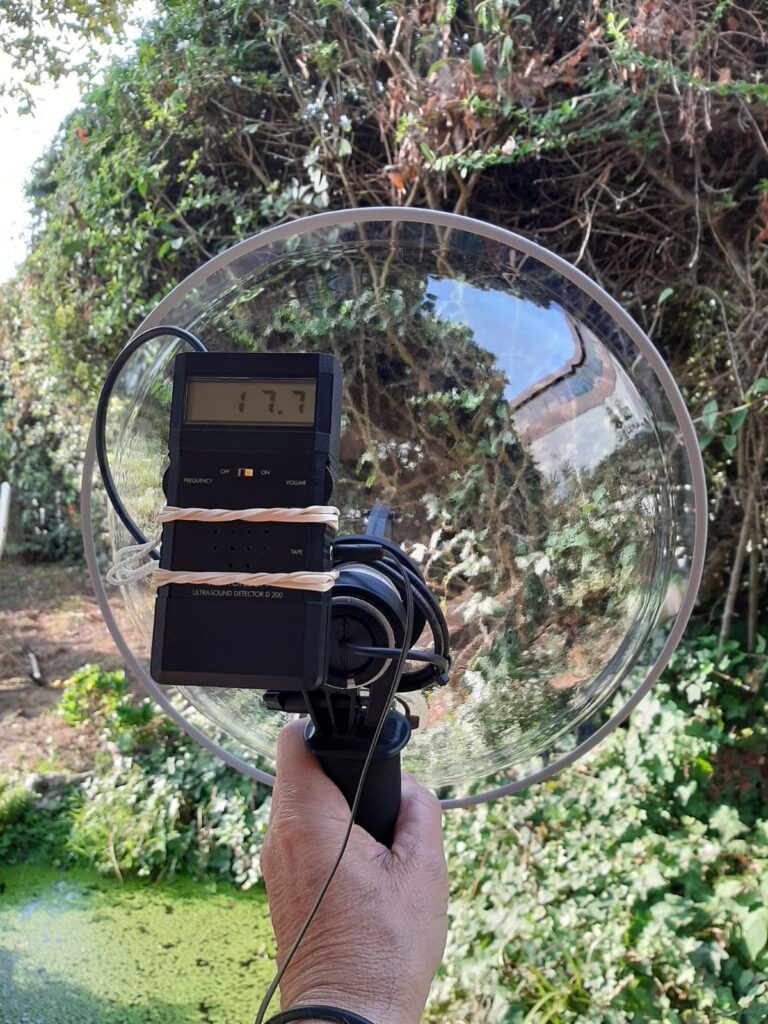
During the last summer (2023), together with my friends Federico Novelli, Thomas Hertach (a Swiss entomologist who has been studying cicadas for years, with particular attention to the species of Italy), and Marco Bardiani (an entomologist who works at the Centro Nazionale per lo studio e la conservazione della Biodiversità Forestale “Bosco Fontana”, Mantua , Italy), I had the opportunity to follow an interesting species of cicada that emits its “song” on almost ultrasonic frequencies. This species, which belongs to the Cicadetta group, may be found at Bosco Fontana where is abundant. But this is not being the place nor the time for a disquisition on this species, it suffices to know that it emits an almost ultrasonic song. Well, during the surveys we carried out, Thomas used a small dish obtained from the headlight of an old car, at the focal point of which he placed a microphone deriving from the widespread Bat Detector Pettersson D200, the basic Heterodyne model of Pettersson production.
In practice, by wearing stereo headphones and connecting the stereo output of the D200 to the digital audio recorder (in the Thomas’ case it was a Tascam DR44WL), you can hear and at the same time record two types of signal: one Heterodyne on one channel and a full frequency spectrum on the other. This allows to hear the ultrasonic field due to the Heterodyne function (the heterodyne process is used to convert a high incoming frequency to a lower, more manageable frequency, so it is audible), but at the same time the frequencies are recorded “full spectrum” up to the limit imposed by the sampling of the digital recorder used.
Once the field surveys were completed, I immediately contacted Lars Pettersson to obtain the right set to carry out the modification to my Bat Detector D200 which I had already owned for almost thirty years. Furthermore, this was a nice memory, as my friend Klas Strandberg (of Telinga!) gave it to me in the early 90s and brought it to me from Sweden during one of our meetings here in Italy, after having taken it directly from his friend Lars Pettersson, since they both live a few kilometers from each other, near Uppsala!
Well, a few days ago I received the cable with the microphone connected and the front panel to be replaced on the D200, so that I could position the microphone outside the D200 and insert it into a 35 cm parabolic dish. So I did!
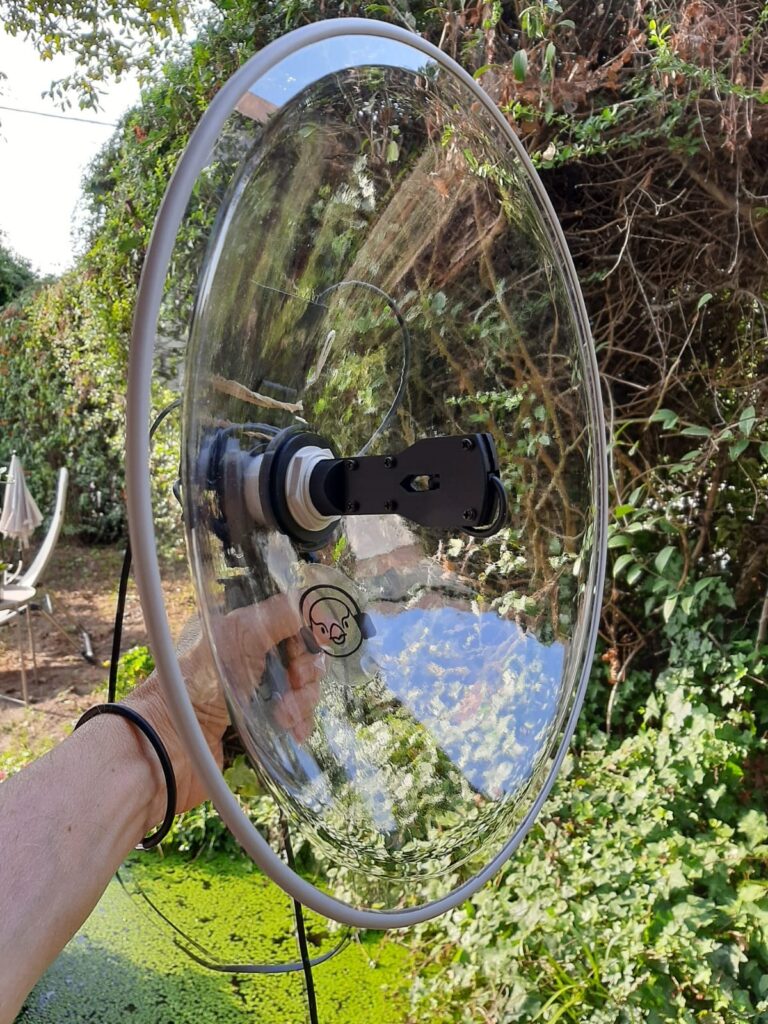
I could do some tests that same evening, as soon as the assembly was finished. I tested it with two orthopteran insects whose sound emissions are quite high in frequency: they are Rhacocleis annulata, a Mediterranean species that I found a few years ago as a breeder in the Po Valley area where I live (see here) and Phaneroptera nana, another small and widely distributed orthopter. Obviously, given the late period, I had to settle for those few species that still emit calls. However, I also had the opportunity to test the set on a very common species of bat, the Pipistrellus kuhlii, a species that emits its echolocation signals at frequencies near to 40 Khz. I didn’t think that it was all in all quite simple to track the bats in their evolutions in the air, obviously at dusk in the evening. I’ll have to try night tracking!
Here I attach the results (downloadable WAV files) obtained with a very common ZOOM H1, set to its maximum sampling frequency, i.e. 96 kHz, therefore with the frequencies able to recording equal to 48 Khz, that are sufficient for the species examined.
Rhacocleis annulata
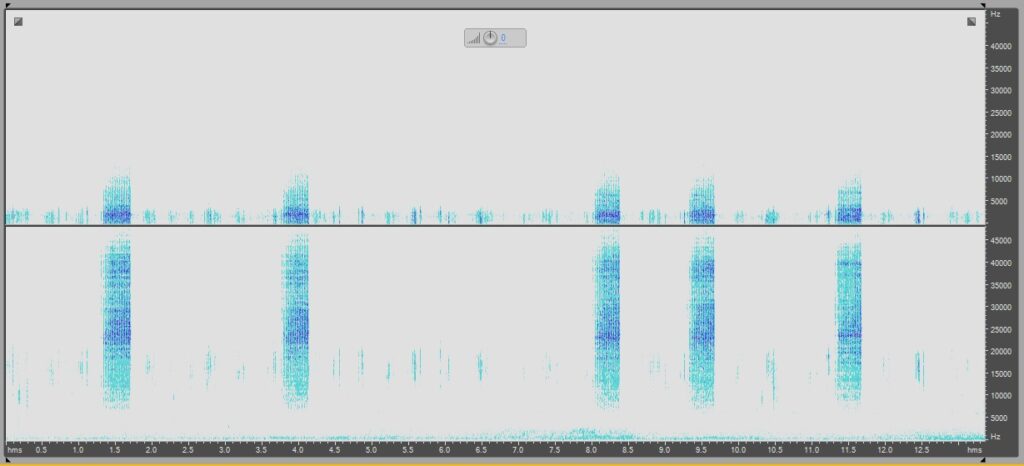
________________________
Phaneroptera nana
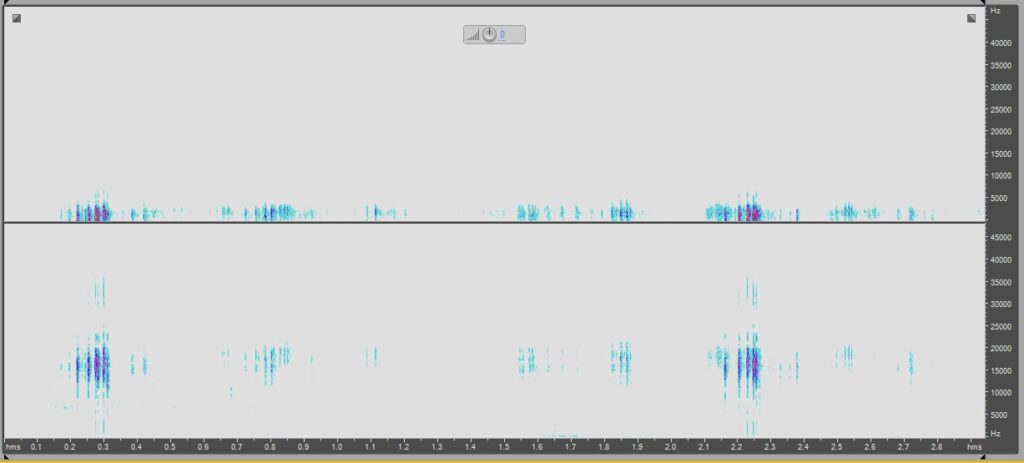
__________________________
Pipistrellus kuhlii
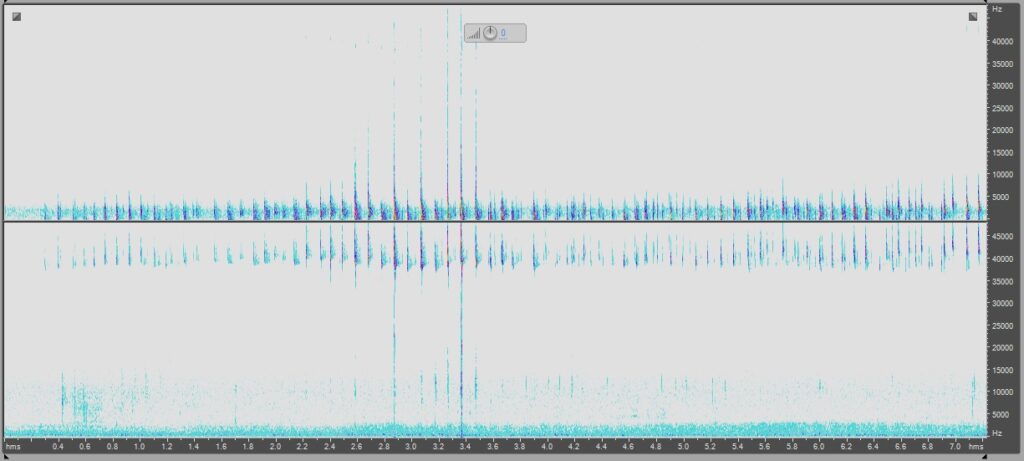
The elastic bands that secures the D200 and you can see in the pictures (they are ugly to look at, I know, but very functional as well!) were necessary because of the lack of something to secure it to the handle; unfortunately the D200 does not have a threaded connection for tripods, so I will try to design something ad hoc to be able to print it in 3D and fix the D200 in a dignified way!
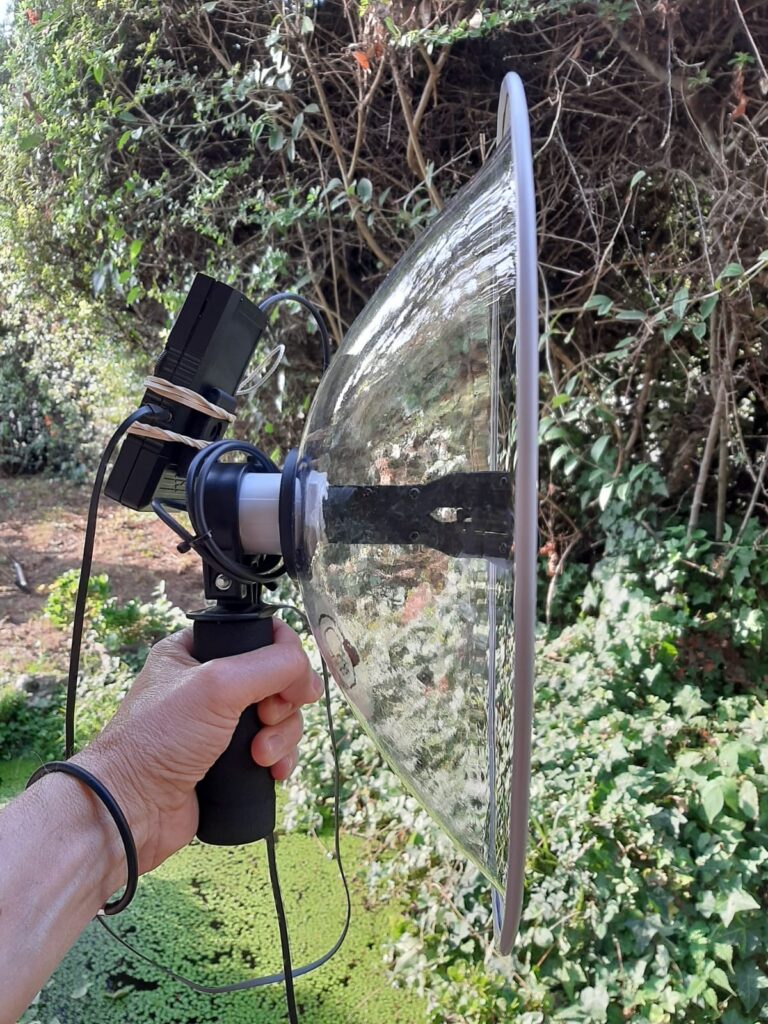
Below prof. Matija Gogala a Slovene entomologist, working mainly in the fields of insect bioacoustics, physiology, and taxonomy.
The professor first holds a big Telinga with the Pettersson ultrasonic microphone and a D200 on his wrist, then a headlight of a Renault R4 with that ultrasonic microphone at the focal point!
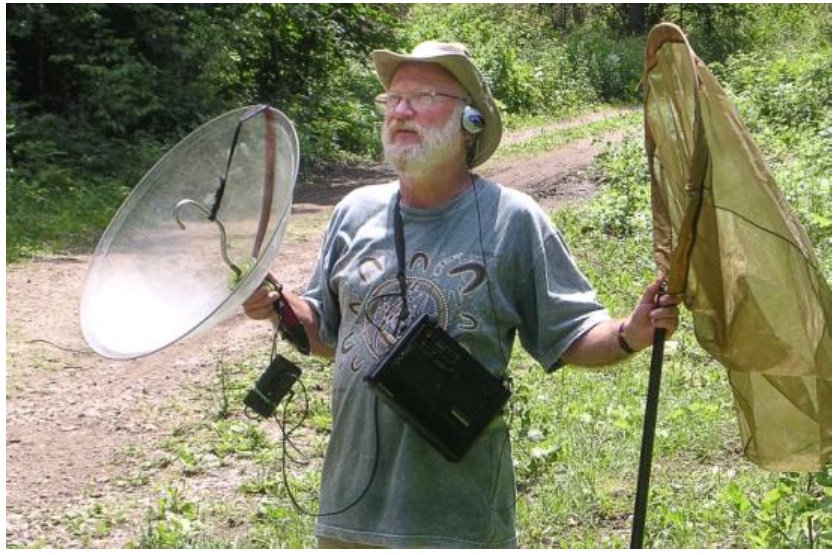
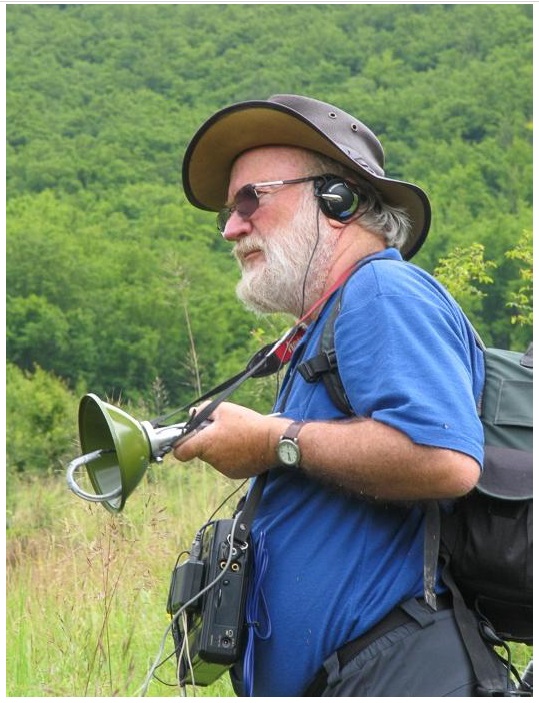
Photos of Matija Gogala taken from the below paper
Many thanks to Thomas Hertach who provided me with the paper.
Cicadina 14 (2014): 43-54
Matija Gogala celebrates his 77th birthday
Tomi Trilar1, Thomas Hertach, Werner E. Holzinger, Stéphane Puissant and Herbert Nickel

Commenti recenti